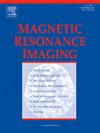A unified circular-polarization metamaterial-inspired resonator for increasing SNR in breast MRI
IF 2
4区 医学
Q2 RADIOLOGY, NUCLEAR MEDICINE & MEDICAL IMAGING
引用次数: 0
Abstract
Magnetic Resonance Imaging (MRI) is crucial for population breast cancer screening. Since almost all MRI machines are equipped with transmit-receive body coils, this configuration of equipment makes MRI readily accessible to breast cancer screening. However, the signal-to-noise ratio (SNR) of breast images is limited by the low sensitivity of the body coil reception and high noise from surrounding tissues. To increase the SNR, we propose a unified circular-polarization metamaterial-inspired resonator (CPMR) for breast MRI at 1.5 T. Most MRI systems utilize birdcage coils as body coils, which produce circularly polarized magnetic fields, but the state-of-the-art resonators can only achieve magnetic field enhancement for linearly polarized fields, or enhance the two linearly polarized components of a circularly polarized magnetic field by using two separate resonators. The proposed CPMR can simultaneously enhance the two orthogonal linearly polarized components of a circularly polarized magnetic field, which will be accomplished by a single integrated resonator. The unified metamaterial-inspired resonator is easier to manufacture and position in an MRI system. The phantom imaging results indicate that, compared with using only the birdcage coil, when performing unilateral and bilateral imaging, the use of CPMR increases the SNR in the region of interest (ROI) by at least 18.4 times and 10.6 times respectively. Compared with using a dedicated breast coil, the SNR in the ROI is increased by at least 48 %.
用于提高乳腺MRI信噪比的统一圆偏振超材料激发谐振器
磁共振成像(MRI)对人群乳腺癌筛查至关重要。由于几乎所有的核磁共振成像仪都配备了收发体线圈,这种设备的配置使得核磁共振成像很容易用于乳腺癌筛查。然而,乳房图像的信噪比(SNR)受到身体线圈接收的低灵敏度和周围组织的高噪声的限制。为了提高信噪比,我们提出了一种统一的圆极化超材料激发谐振器(CPMR),用于1.5 t的乳房MRI,大多数MRI系统使用鸟笼线圈作为主体线圈,产生圆极化磁场,但最先进的谐振器只能实现线性极化磁场的磁场增强,或者通过使用两个单独的谐振器来增强圆极化磁场的两个线性极化分量。所提出的CPMR可以同时增强圆极化磁场的两个正交线极化分量,这将由单个集成谐振器完成。统一的超材料激发谐振器在MRI系统中更容易制造和定位。幻影成像结果表明,与仅使用鸟笼线圈相比,在进行单侧和双侧成像时,CPMR使感兴趣区域(ROI)的信噪比分别提高了至少18.4倍和10.6倍。与使用专用乳房线圈相比,ROI中的信噪比至少提高了48%。
本文章由计算机程序翻译,如有差异,请以英文原文为准。
求助全文
约1分钟内获得全文
求助全文
来源期刊

Magnetic resonance imaging
医学-核医学
CiteScore
4.70
自引率
4.00%
发文量
194
审稿时长
83 days
期刊介绍:
Magnetic Resonance Imaging (MRI) is the first international multidisciplinary journal encompassing physical, life, and clinical science investigations as they relate to the development and use of magnetic resonance imaging. MRI is dedicated to both basic research, technological innovation and applications, providing a single forum for communication among radiologists, physicists, chemists, biochemists, biologists, engineers, internists, pathologists, physiologists, computer scientists, and mathematicians.
 求助内容:
求助内容: 应助结果提醒方式:
应助结果提醒方式:


